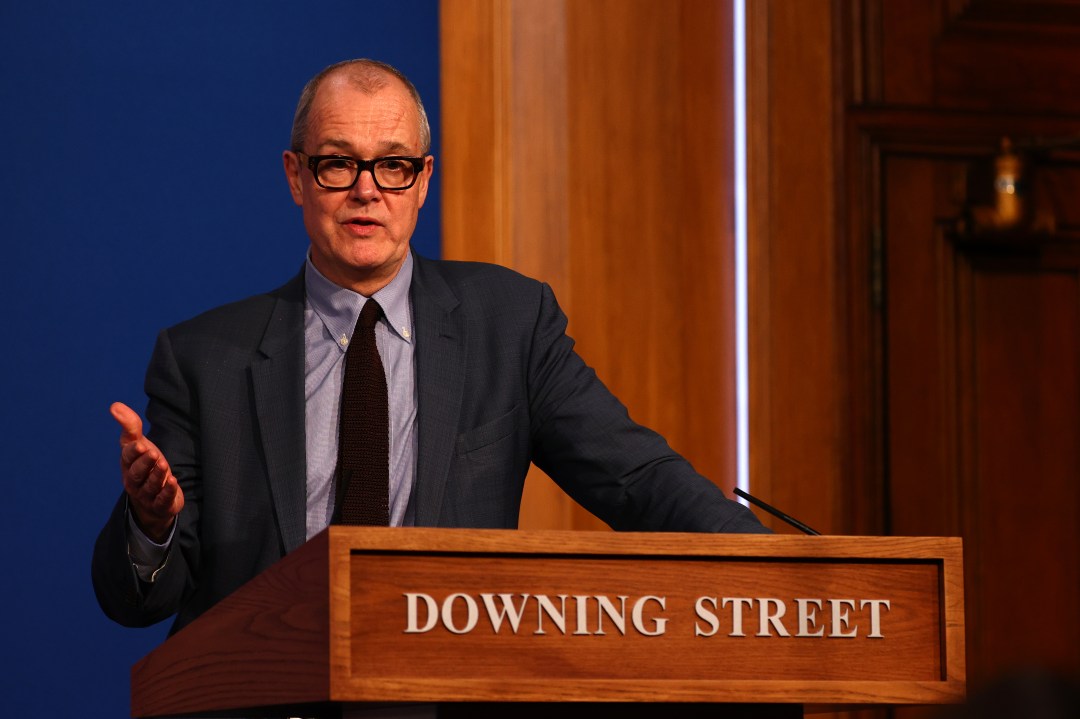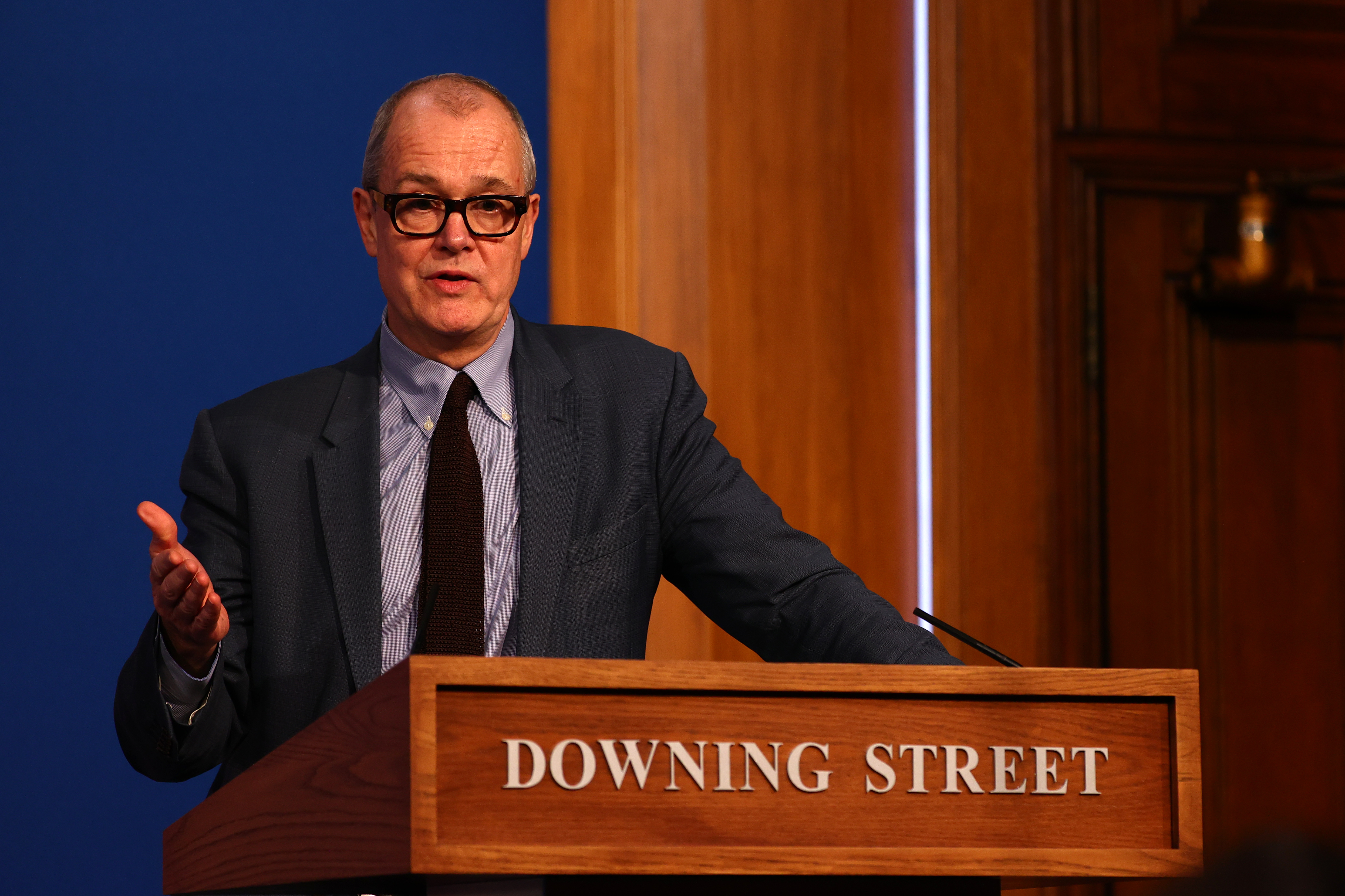Does Sage have a pro-lockdown bias? Sir Patrick Valance, the government’s chief scientific adviser, wrote an article in the Times recently presenting Sage as a ruthlessly neutral force speaking ‘scientific truth to power’. He’s refuting the idea of Sage providing a range of gloomy factoids and scenarios which tend to make the case for lockdown. His description is rather different to what Prof Graham Medley, chairman of the Sage modelling committee, told me last weekend: that ‘we generally model what we are asked to model.’ Asked by whom? I’d still love to know.
Anyway, Sir Patrick puts all this to one side and stresses how Sage offers a breadth of advice on Omicron. ‘The range of assumptions modelled can be very broad; for disease severity for Omicron one model explored a range from 10 per cent of Delta severity through to 100 per cent.’
What he doesn’t mention is the way in which such options are then presented in the summary seen by ministers. The last Sage memo (seen by The Spectator), says that on current trends, nine out of ten of these severity scenarios would see Omicron hospitalisations exceed the January peak of almost 35,000 Covid patients in hospital and 4,000 admissions a day.
‘In the absence of further interventions or significant behaviour change, intrinsic severity would need to be greatly reduced (by around 90 per cent) for hospitalisations to not reach the levels of previous peaks unless the wave peaks early for other reasons, which should not be assumed for planning purposes.’
So rather than say ‘all kinds of outcomes are still possible’ Sage was (in effect) saying ‘in nine out of ten of our scenarios, the NHS is in real trouble unless you ministers agree to authorise “interventions”. And quick smart, if you please, because the longer you wait the longer that lockdown will have to be.’ It emphasises the need for quick decisions:-
‘It continues to be the case that the earlier interventions happen the greater the effect they will have. Even a short intervention could reduce both peak and total admissions, particularly if introduced early enough.’
Lest there be any confusion about the need for more restrictions pronto, the Sage memo spells it out
But what about the possibility that the boosters work, that Britain’s experience will be closer to South Africa’s low cases-to-hospital ratio (and far-shorter average hospital stay) so no more restrictions are needed?
This is not a hypothetical: this is the base case that JP Morgan outlined to clients last Monday. It’s a week old and even then JP Morgan said things were ‘too early to call’. But in applying lessons from South Africa this analysis proved on the money – given the news last week about far-reduced Omicron potency. JP Morgan anticipated all this a way that the Sage consensus did not.
I quote some extracts below as an example of the kind of a well-argued and plausible scenario that was not being shared with ministers last Monday. Perhaps Sir Patrick thinks JP Morgan has got something fundamentally wrong – or perhaps sharing the less alarming analysis of respected non-Sage forecasters isn’t something he yet feels ready to do.
Text below, with graphs taken from The Spectator’s data hub.
Note from JP Morgan: Early data from the UK, South Africa & Israel suggests the impact of Omicron on hospitalisations could be manageable
In South Africa, the UK and Israel, we are starting to see evidence that an Omicron wave could be manageable. In South Africa the Omicron wave could be past the peak and in the UK – despite a substantial rise in cases – hospitalisations remain under control so far (at less than 1,000 per day) as the majority of cases (c. 84 per cent) are below the age of 50.
Although there could still be a rise in hospitalisations in the UK associated with Christmas Day mixing, we anticipate the efficacy of boosters against hospitalisations holding up (with 90 per cent of over 65s already boosted) such that hospitalisations remain below 1,500 per day (or 10,000 a week). Israel too is showing a rise in cases due to Omicron, but with limited increase in severe disease, which also is encouraging.
For other countries with lower booster rates than the UK or Israel, Omicron could add to the impact of Delta waves already ongoing requiring further lockdowns, in particular in France and potentially in Italy in the New Year.
Overall, despite the large rise in the number of cases in the UK due to Omicron, we are cautiously optimistic that we should not see a significant increase in hospitalisations requiring a significant ramp up in lockdown measures given the high booster penetration.
For countries with low booster numbers and high hospitalisations from Delta already (such as France and now potentially Italy) we remain of the view that further lockdown measures are likely to be required in the coming weeks.
UK: Further restrictions still not necessarily required
Over the week 13-19 December the new infection count increased by 53 per cent to 543,224 (the most cases in a week recorded during the pandemic), of which 33,964 were official Omicron cases identified this week (previous week 3,137). Testing levels were up 23 per cent and so the rate of positive tests was only up to 4.7 per cent (previous 4.3 per cent). Per day infections were between 53,923 and 92,288 (previous week between 45,165 and 57,335). This week the rise in cases was mainly due to 20-49 year olds catching Delta and Omicron at Christmas parties. Cases in school children were static this week and there was a small tick up in cases in the over 60s.
With this age distribution of cases and a booster rate of 90 per cent for the over 65s it is not surprising to us that hospitalisation have only risen by 4 per cent this week to 6,237 (based on the first three days of the week) and the rate of hospitalisation has fallen significantly to 1.1 per cent (prior week 1.7 per cent). The occupancy of ventilators was down slightly this week at c. 19.9 per cent (last week 20.1 per cent), which equates to about 893 people.
While it is too early to call we are cautiously optimistic for the coming weeks. Next week we would expect cases to fall given:
- The beginning of the school holidays
- An exodus of UK holidaymakers abroad – witness the chaos heading to France on 17 December
- Cancellation of the majority of the Premier League football matches last weekend
- A change in behaviour brought about by the significant case rises
While Christmas mixing is likely to lead to an increase in cases in the last week of the year we believe that should represent a peak, given work from home and the remainder of the school holidays. Christmas will provide the ultimate test of the booster efficacy against hospitalisation, but we expect that to hold up, such that hospitalisations remain below 10,000 per week. Schools reopening in January could see cases remaining high throughout January, although this should not result in significant increases to hospitalisations.
As result, even with the significant case rises, we do not believe the UK needs a major lockdown and we believe the government is unlikely to significantly strengthen Covid-19 measures.








Comments